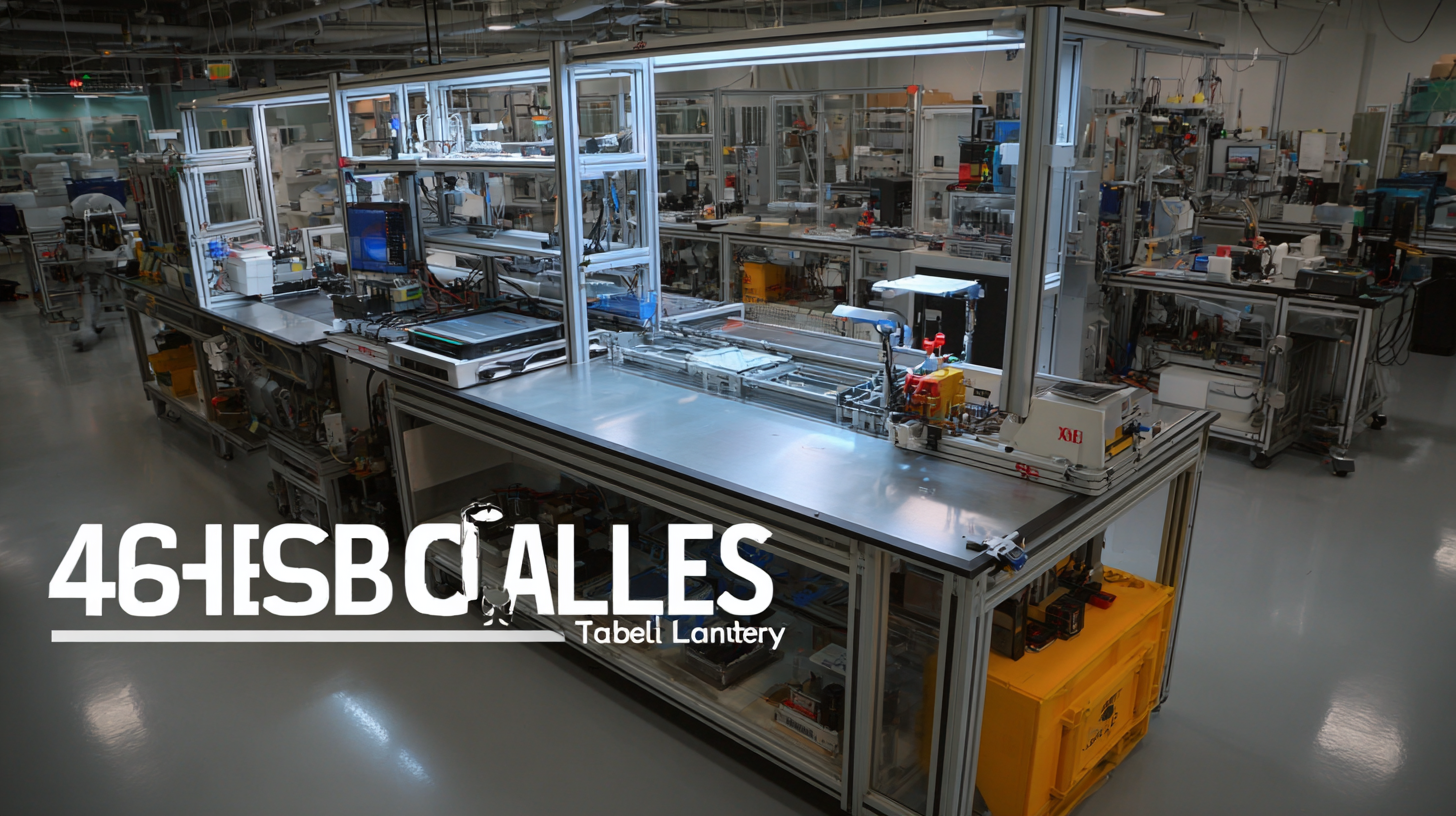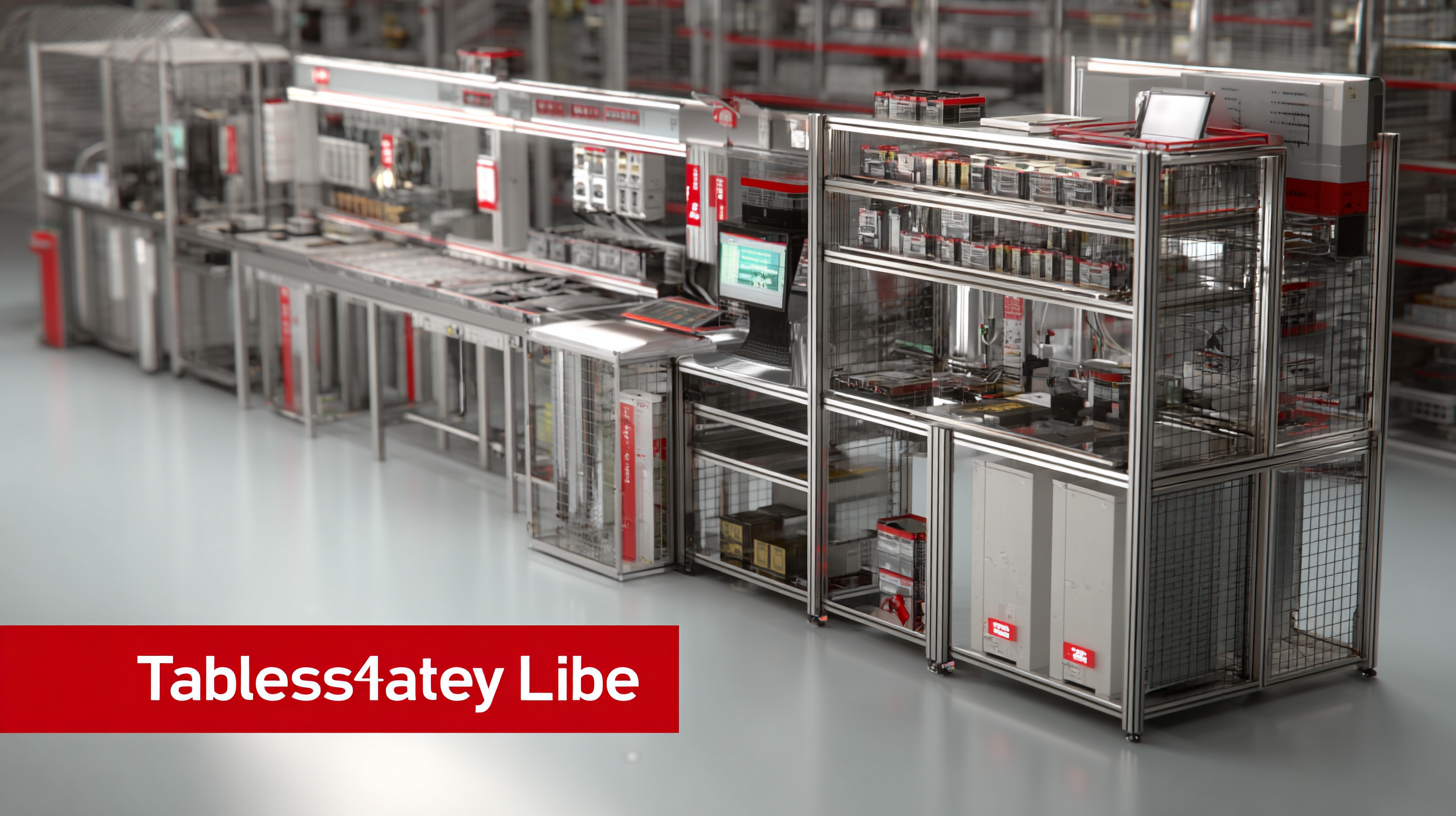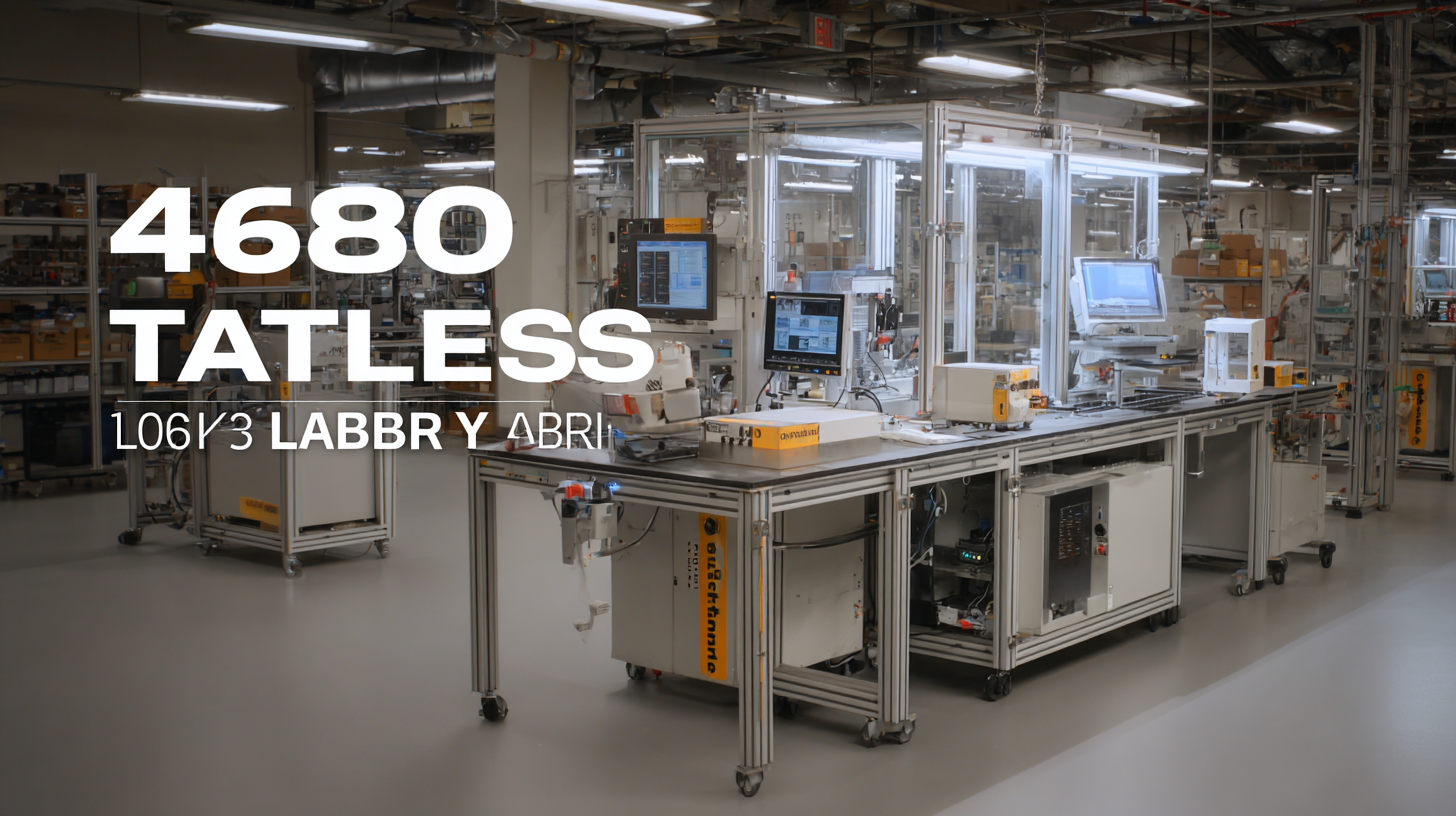Leave Your Message
In the fast-evolving landscape of battery technology, the 4680 Tabless Battery Lab Line stands out as a pivotal innovation aimed at enhancing production efficiency and performance. As we strive to meet the growing demand for advanced energy storage solutions, it becomes essential to establish systematic approaches for optimizing the production processes associated with these groundbreaking batteries. This blog will present a comprehensive checklist designed to guide manufacturers in identifying key areas for improvement within their 4680 Tabless Battery Lab Line. By focusing on critical factors such as material selection, manufacturing techniques, and quality control measures, we can pave the way for increased output and reduced costs while maintaining high standards of safety and reliability. Join us as we explore these essential strategies for transforming battery production in a way that meets future energy needs.

The production of 4680 tabless batteries is gaining traction as manufacturers strive for higher efficiency and greater energy density. According to a recent report from the International Energy Agency, the demand for battery technologies is set to grow by over 25% annually, making the optimization of production lines more critical than ever. By implementing best practices such as lean manufacturing techniques and automation, manufacturers can significantly reduce waste and improve throughput. For instance, Toyota's integration of robotics in their battery production has resulted in a 30% decrease in manufacturing time, demonstrating the effectiveness of modern technology in streamlining operations.
Moreover, ensuring precise quality control is vital in the enhancement of efficiency. A study from McKinsey highlights that companies employing advanced analytics for quality assurance can cut down the defect rates by as much as 40%. This allows for rapid identification of process inefficiencies, ensuring that the production of 4680 tabless batteries meets the rigorous standards set by the industry. Furthermore, adopting modular manufacturing systems can facilitate quicker adjustments in production processes, enabling companies to adapt swiftly to changing market demands while maximizing output and maintaining high product quality.
In the fast-evolving landscape of battery manufacturing, optimizing the production processes of the next-generation 4680 tabless battery is crucial for enhancing efficiency and reducing costs. Innovative technologies are being leveraged to streamline these processes, driving advancements in both manufacturing speed and product quality. With the tabless design's potential to improve energy density and reduce assembly complexity, manufacturers must focus on integrating automation and smart manufacturing practices to maximize output.

Tip: Implementing robotics in the manufacturing line can significantly boost productivity. Automated systems not only increase efficiency by minimizing human error but also facilitate high-speed operations that can adapt to varying production demands without extensive downtime.
Additionally, data analytics plays a vital role in the optimization of battery manufacturing. By employing advanced analytics techniques, manufacturers can monitor production in real-time, identify bottlenecks, and preemptively address issues before they escalate. This data-driven approach allows for informed decision-making and continuous improvement of processes.
Tip: Regularly analyze production data to discover patterns and insights. Utilizing machine learning algorithms can help forecast potential failures or inefficiencies, enabling proactive strategies that enhance overall operational efficiency.
When optimizing the production of the 4680 tabless battery, establishing clear Key Performance Indicators (KPIs) is critical to measure success effectively. These KPIs should assess various aspects of the production line, including yield rates, cycle times, and defect rates. For instance, tracking yield rates can provide insight into the efficiency of the manufacturing process, allowing teams to identify bottlenecks and implement corrective measures. Meanwhile, monitoring cycle times helps gauge the speed of production, which is essential for meeting market demands.
In addition to yield and cycle times, it's important to evaluate overall equipment effectiveness (OEE). This metric combines availability, performance, and quality to give a comprehensive view of how the production line is functioning. By focusing on OEE, manufacturers can pinpoint areas for optimization and enhance productivity. Regular review of these KPIs will not only highlight current performance but also inform strategic decisions for future improvements, ensuring that the production of 4680 tabless batteries remains competitive and efficient in the evolving market landscape.
This chart displays the performance indicators related to the optimization of the production line for the 4680 Tabless Battery. The dimensions include production yield, cycle time, and defect rate over the last six months.
In the rapidly evolving landscape of battery production, optimizing supply chain dynamics is crucial for the successful implementation of innovative technologies like the 4680 tabless battery. Collaborative approaches among manufacturers, suppliers, and logistics partners can enhance efficiency and reduce delays. By establishing strong communication channels and aligning goals across the supply chain, stakeholders can identify bottlenecks early and adapt their strategies accordingly. This proactive engagement fosters a culture of continuous improvement, essential for navigating the complexities of battery production.
Additionally, leveraging advanced data analytics and real-time tracking systems can significantly enhance decision-making processes within the supply chain. By utilizing these technologies, companies can gain insights into inventory levels, production schedules, and demand forecasts. This, in turn, allows for better coordination of resources, reduced wastage, and improved turnaround times. When all participants in the supply chain work collaboratively and transparently, they can effectively respond to fluctuations in demand and ensure the steady flow of materials needed for producing high-quality 4680 tabless batteries.
The global battery management system (BMS) market is anticipated to soar from $11.42 billion in 2024 to $46.94 billion by 2032, reflecting a remarkable compound annual growth rate (CAGR) of 19.32%. This growth is indicative of the increasing emphasis on sustainable practices within the battery production sector, particularly as industries aim to minimize waste and enhance the longevity of battery systems. In parallel, the industrial lithium-ion battery market is estimated to reach $4 billion in 2024, with a projected CAGR of 11.9% from 2025 to 2034, underscoring its pivotal role in powering machines and heavy equipment.

Adopting a circular economy model is essential in driving sustainability in the battery sector. By embracing recycling and reuse, businesses can not only reduce waste but also take advantage of cost savings. For instance, innovative partnerships, like that of Altilium and Connected Energy, focus on extending the life of electric vehicle batteries, demonstrating that longevity and sustainability can significantly influence market dynamics.
Tip: Incorporating advanced materials and technologies in the production of batteries can substantially enhance efficiency and reduce environmental impact. By focusing on these sustainable strategies, manufacturers can drive the change needed for a greener future in battery production.
